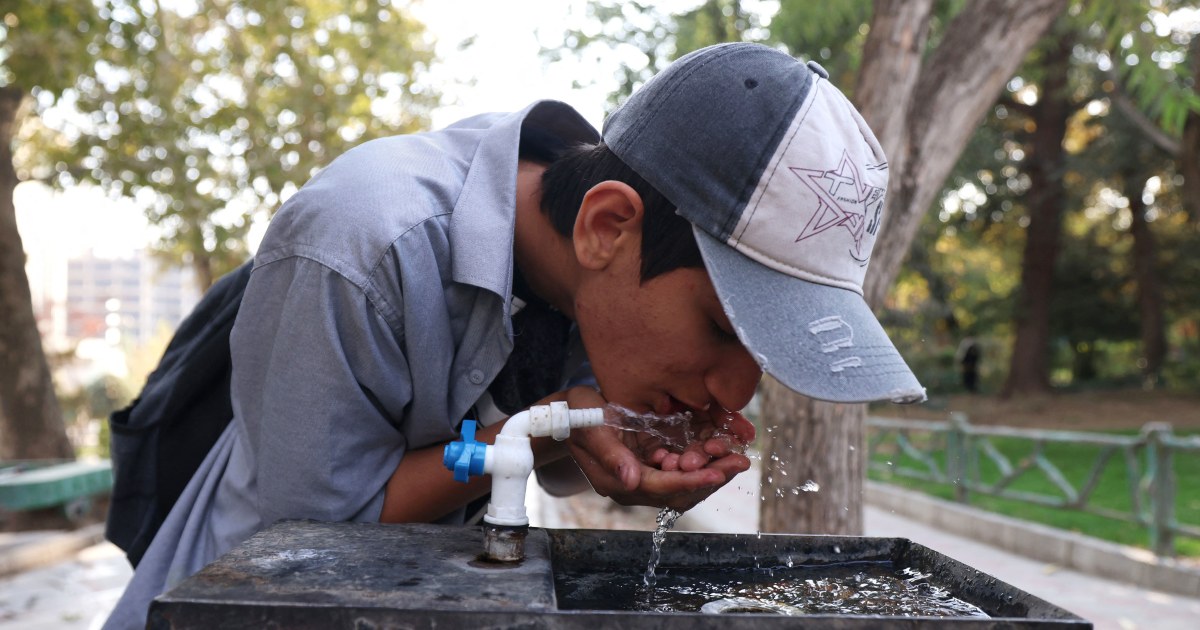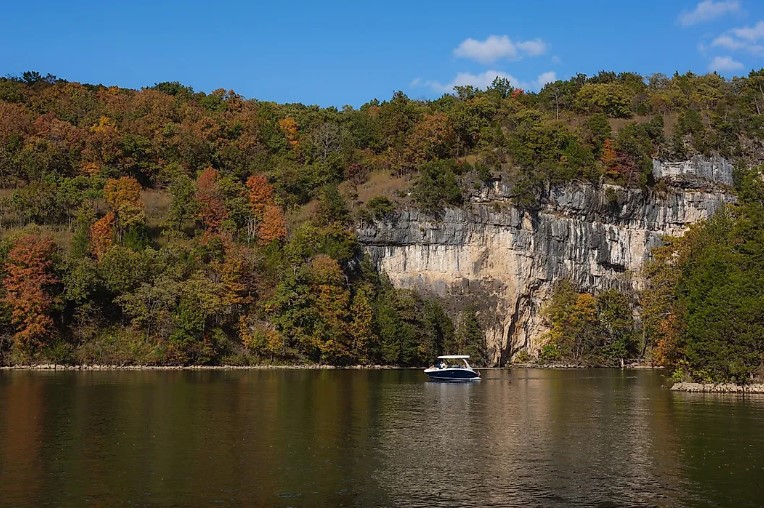Iran water crisis: Taps run dry as Tehran evacuation looms – NBC News

Report on Iran’s Water Crisis and Sustainable Development Goal Failures
Executive Summary
Iran is experiencing a severe water crisis, described by experts as “water bankruptcy,” which has profound implications for the nation’s stability, environmental health, and socio-economic security. The situation represents a significant failure to address multiple United Nations Sustainable Development Goals (SDGs), particularly those related to water, climate, ecosystems, and governance. The crisis, stemming from prolonged drought, mismanagement, and overconsumption, has led to public unrest and irreversible environmental damage, undermining progress towards a sustainable future.
Socio-Political Instability and Setbacks for SDG 16
Impact on Peace, Justice, and Strong Institutions (SDG 16)
The water crisis is a direct threat to national stability, transforming an environmental issue into a source of political grievance and civil unrest. This erosion of public trust and the subsequent protests challenge the objectives of SDG 16, which aims to promote peaceful and inclusive societies and build effective, accountable institutions.
- Student protests have erupted over water shortages, including recent demonstrations at Tehran’s Al-Zahra University.
- The issue has historically fueled tensions and violence, particularly in regions like the Khuzestan province.
- Public sentiment increasingly blames state mismanagement and inaction for the shortages, viewing it as a failure of governance.
Systemic Causes and Deviation from SDG 6 and SDG 12
Challenges to Clean Water and Sanitation (SDG 6) and Responsible Consumption (SDG 12)
The crisis is a result of systemic failures that contravene the principles of sustainable water management (SDG 6) and responsible consumption patterns (SDG 12). Analysts identify a combination of environmental and man-made factors that have led to the current state of “water bankruptcy.”
- Prolonged Drought: A key environmental factor exacerbated by climate change.
- Overconsumption: Years of unsustainable water use have depleted resources.
- Inefficient Agriculture: The agricultural sector’s high water consumption is a major strain.
- Mismanagement: Decades of poor policy decisions, including the construction of mega-dams with questionable utility, have worsened the situation.
Irreversible Environmental Damage and Neglect of SDG 13 and SDG 15
Impact on Climate Action (SDG 13) and Life on Land (SDG 15)
The long-term consequences of the water crisis constitute irreversible damage to Iran’s ecosystems, directly conflicting with the aims of SDG 13 (Climate Action) and SDG 15 (Life on Land). Kaveh Madani, Director of the UN University Institute for Water, Environment and Health, states the situation is no longer a mitigatable crisis but a “state of failure,” with permanent damage to the environment, economy, and infrastructure.
A 2021 study in Scientific Reports provided early warnings, highlighting severe environmental degradation linked to unsustainable water practices. The findings indicated a failure to protect terrestrial ecosystems as outlined in SDG 15.
- Groundwater was being over-drafted in nearly 80% of the country.
- This overdraft was causing land subsidence, a phenomenon that threatens urban infrastructure and fails to meet targets for sustainable cities (SDG 11).
- The research documented increasing soil salinity and the disappearance of salt lakes.
- The study warned of a brewing crisis with “irreversible impacts on land and environment, threatening country’s water, food, socio-economic security.”
Following the publication of this research, the publicly available data from Iran’s Ministry of Energy used in the study was reportedly removed from public access, hindering further independent analysis and accountability.
Analysis of Sustainable Development Goals in the Article
1. Which SDGs are addressed or connected to the issues highlighted in the article?
- SDG 6: Clean Water and Sanitation – The core issue is a severe water crisis, including shortages, overconsumption, and mismanagement of water resources.
- SDG 15: Life on Land – The article details the environmental consequences of the water crisis, such as ecosystem damage, land sinking, soil salinization, and the disappearance of salt lakes.
- SDG 16: Peace, Justice and Strong Institutions – The water crisis is described as a source of political grievance, fueling unrest, protests, violence, and arrests, highlighting issues with governance and public trust.
- SDG 2: Zero Hunger – The article mentions threats to “food… security” and an “inefficient agricultural sector,” linking water scarcity directly to food production capabilities.
- SDG 11: Sustainable Cities and Communities – The protests in Tehran and issues in Khuzestan province show how water scarcity directly impacts urban and regional populations, affecting their living conditions and security.
2. What specific targets under those SDGs can be identified based on the article’s content?
- SDG 6: Clean Water and Sanitation
- Target 6.4: By 2030, substantially increase water-use efficiency across all sectors and ensure sustainable withdrawals and supply of freshwater to address water scarcity. The article highlights “years of overconsumption” and an “inefficient agricultural sector,” which are direct challenges to this target.
- Target 6.5: By 2030, implement integrated water resources management at all levels. The article points to “mismanagement” and the building of “mega-dams of questionable utility” as key causes of the crisis, indicating a failure to implement integrated management.
- Target 6.6: By 2020, protect and restore water-related ecosystems, including mountains, forests, wetlands, rivers, aquifers and lakes. The text explicitly mentions “irreversible” “damages… to the ecosystem” and that “salt lakes to disappear,” showing a direct failure to meet this target.
- SDG 15: Life on Land
- Target 15.3: By 2030, combat desertification, restore degraded land and soil, including land affected by drought and floods, and strive to achieve a land degradation-neutral world. The mention of Iran’s “land to sink” and its “soil to grow more salty” are clear indicators of land degradation that this target aims to combat.
- SDG 16: Peace, Justice and Strong Institutions
- Target 16.6: Develop effective, accountable and transparent institutions at all levels. The article reflects a lack of institutional effectiveness, with citizens blaming the state (“The authorities have known about this problem for years, but nothing has been done”). The removal of public access to water data also points to a lack of transparency.
- Target 16.7: Ensure responsive, inclusive, participatory and representative decision-making at all levels. The protests and public grievances described in the article suggest that decision-making processes are not responsive to the needs and concerns of the population.
3. Are there any indicators mentioned or implied in the article that can be used to measure progress towards the identified targets?
- Indicator for Target 6.4 (Water Stress): The article implies a high level of water stress by citing a study that warned Iran was “overdrafting groundwater in nearly four-fifths of the landscape.” The rate of groundwater overdraft is a direct measure of unsustainable water withdrawal.
- Indicator for Target 15.3 (Land Degradation): The article mentions several direct indicators of land degradation:
- The proportion of land that is sinking.
- The increase in soil salinity (“soil to grow more salty”).
- The disappearance of salt lakes, which can be measured by changes in surface area over time.
- Indicator for Target 16.6 & 16.7 (Institutional Accountability & Responsiveness): The article implies indicators related to governance and social stability:
- The number of public protests related to resource shortages (“students protesting water shortages”).
- The incidence of violence and arrests connected to these protests.
- Public access to government data, which is noted as having been restricted (“they took the data sets out of public access”).
SDGs, Targets and Indicators Table
| SDGs | Targets | Indicators |
|---|---|---|
| SDG 6: Clean Water and Sanitation | 6.4: Increase water-use efficiency and address water scarcity. | Rate of groundwater overdraft (mentioned as occurring in “nearly four-fifths of the landscape”). |
| 6.5: Implement integrated water resources management. | Evidence of mismanagement (e.g., construction of “mega-dams of questionable utility”). | |
| 6.6: Protect and restore water-related ecosystems. | Disappearance of salt lakes; irreversible damage to the ecosystem. | |
| SDG 15: Life on Land | 15.3: Combat desertification and restore degraded land and soil. | Proportion of land sinking; increase in soil salinity. |
| SDG 16: Peace, Justice and Strong Institutions | 16.6: Develop effective, accountable and transparent institutions. | Lack of public access to government water data; public perception of government inaction. |
| 16.7: Ensure responsive and inclusive decision-making. | Number of public protests, incidents of violence, and arrests related to water shortages. |
Source: nbcnews.com
What is Your Reaction?
 Like
0
Like
0
 Dislike
0
Dislike
0
 Love
0
Love
0
 Funny
0
Funny
0
 Angry
0
Angry
0
 Sad
0
Sad
0
 Wow
0
Wow
0
















































:focal(1500,1000)/https://media.globalcitizen.org/a6/9a/a69a4720-d8a1-4715-b596-18738d03c05c/rotary_polio_hero_image.jpg?#)







/countries/sri-lanka/photo-credit---dmc-sri-lanka.tmb-1200v.jpg?sfvrsn=dc298bcc_1#)



















